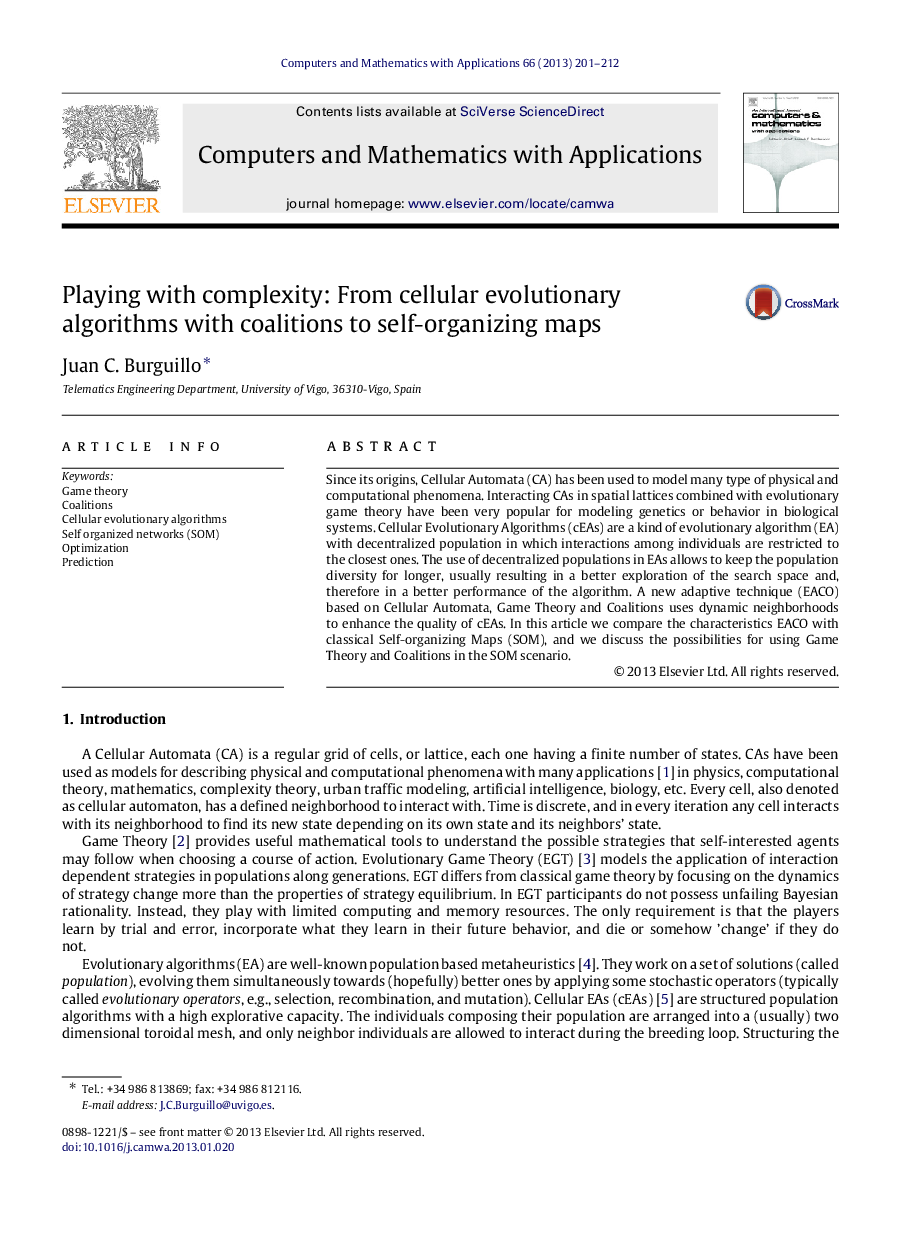| Article ID | Journal | Published Year | Pages | File Type |
|---|---|---|---|---|
| 468145 | Computers & Mathematics with Applications | 2013 | 12 Pages |
Since its origins, Cellular Automata (CA) has been used to model many type of physical and computational phenomena. Interacting CAs in spatial lattices combined with evolutionary game theory have been very popular for modeling genetics or behavior in biological systems. Cellular Evolutionary Algorithms (cEAs) are a kind of evolutionary algorithm (EA) with decentralized population in which interactions among individuals are restricted to the closest ones. The use of decentralized populations in EAs allows to keep the population diversity for longer, usually resulting in a better exploration of the search space and, therefore in a better performance of the algorithm. A new adaptive technique (EACO) based on Cellular Automata, Game Theory and Coalitions uses dynamic neighborhoods to enhance the quality of cEAs. In this article we compare the characteristics EACO with classical Self-organizing Maps (SOM), and we discuss the possibilities for using Game Theory and Coalitions in the SOM scenario.
